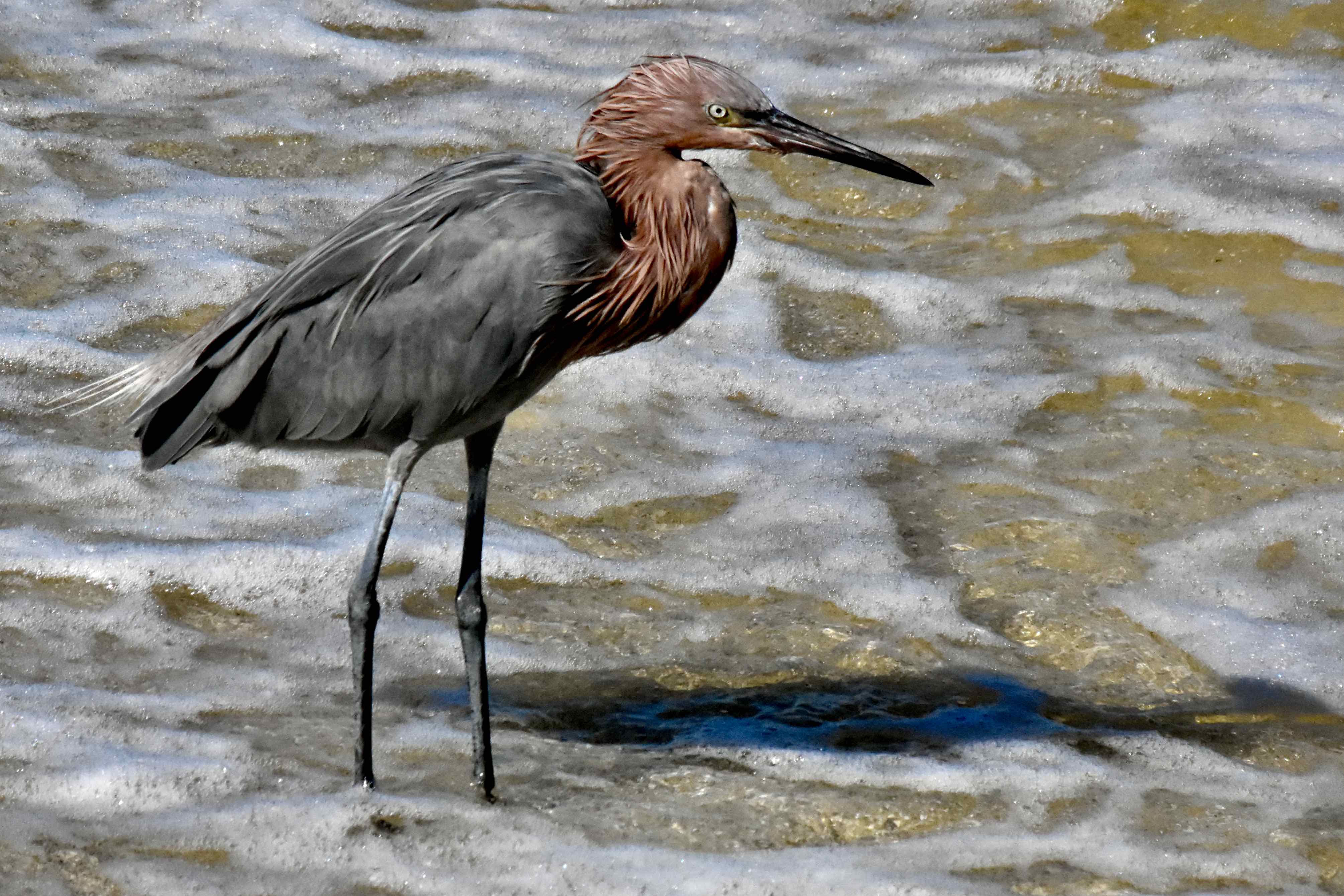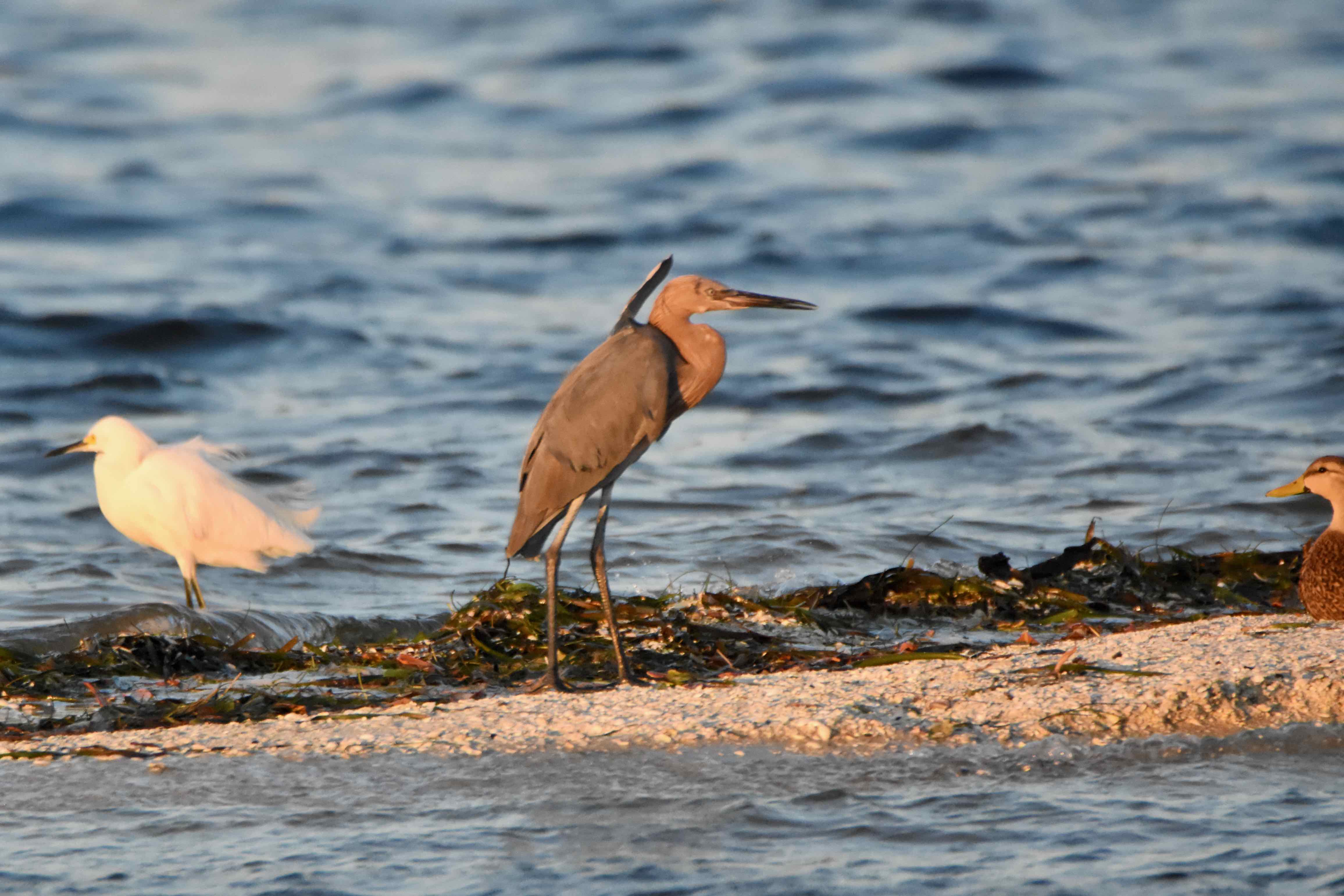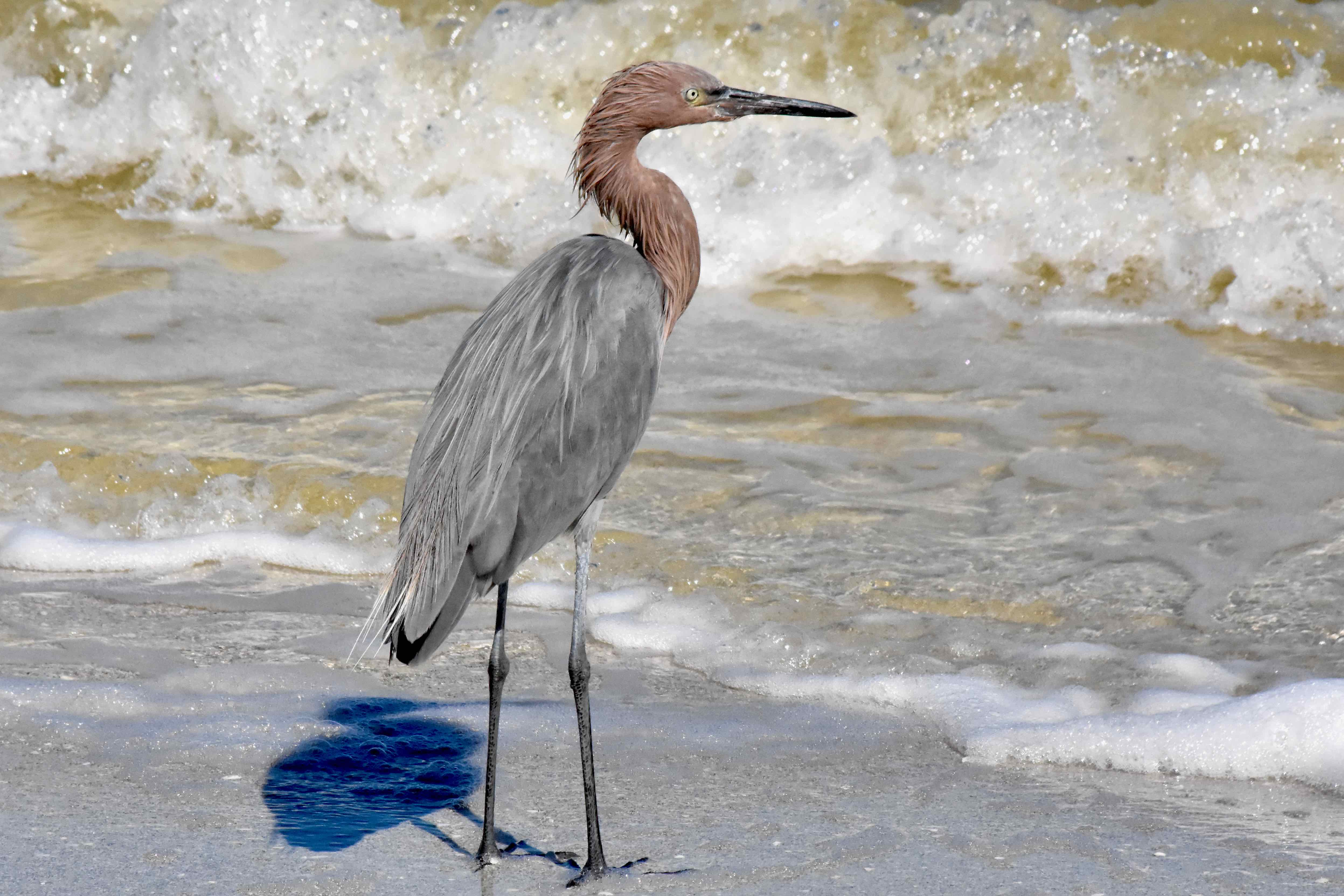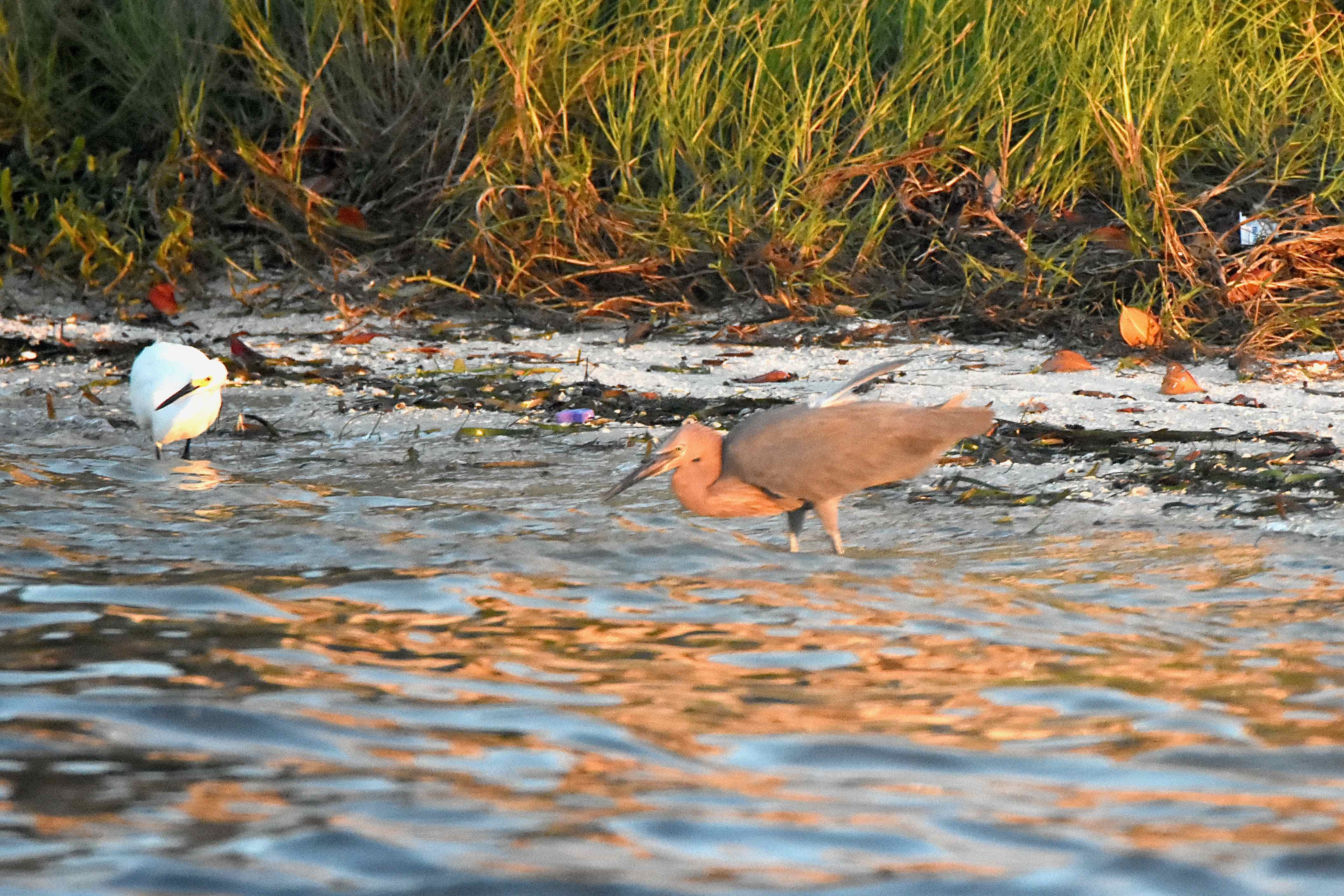
Reddish egret, photographed at Lighthouse Beach Park, Sanibel, Lee County, in October 2016.
Like its beautifully plumed relatives, the reddish egret, Egretta Rufescens, was hunted nearly to the edge of extinction during the late 1800s and early 1900s, targeted by the fashion industry.
Unfortunately, the reddish population really has never bounced back, even with the protection of the Migratory Bird Treaty Act, making it the rarest egret native to North America. According to a survey done in the early 1990s, there were only 350 to 400 breeding pairs left in Florida. One estimate done in recent years puts the global population between 6,000 and 10,000 breeding birds.
Reddish egrets are coastal birds found in pockets along both the Atlantic and the Gulf, in the Everglades and the Keys. Among the better places to find this bird: Collier and Lee counties, the Tampa Bay area, and Volusia and Brevard counties.
They're also found in Texas, both coasts of Mexico, Central America, the Caribbean, Venezuela and Colombia. Reddish egrets are generally non-migratory, but maps show migratory sightings along the northern Gulf Coast, including Florida's Panhandle, and wintering in Jamaica and Hispaniola (Haiti and the Domincan Republic). Preferred habitat: coastal tidal flats, salt marshes, estuaries with mangroves and lagoons. Places with shallow, calm waters are favorites for foraging.
The odd thing about the reddish egret is that it isn't necessarily reddish. There are two morphs of the bird, the dark, shown on these pages and the most common form, and the white, which is entirely white except for the red in the base of the bill.
Both forms are on the large side as egrets go, reaching 32 inches tall, with a wing span of four feet. The dark morph is red through the face, head, neck and underside, gray on the back and the wings. The bill is pink at the base, black at the tip.
The reddish egret diet is fish, fish, fish, with a few frogs, tadpoles and crustaceans mixed in with an insect or two. It will run after its prey, jump from side to side and appear to do a kind of dance. The spectacle is the reason why some local birders have given it the nickname, drunken egret. At times, it will stand still in the water, spread its wings and attract small fish that tend to like shade.
In Florida, reddish egrets nest in red mangroves, forming colonies. In Texas, they're ground nesters on barrier islands. They mate in late winter to early spring, in Florida. Males and females build a platform nest using sticks and grass where mom lays a clutch of 3 or 4 eggs, more or less, and both parents handle incubation duties, which last three to four weeks. Both parents also feed the young. They fledge at about six or seven weeks.
Florida lists the reddish egret as threatened, but the population has made some progress. At one point in the late '20s and '30s, there were no sightings of the bird at all in Florida. Still, the overall population is estimated to be only a tenth of what it was before the devastating hunts of the 19th and 20th centuries took place. Current threats include coastal development and human activities in places where the birds forage and breed. Environmental decline, loss of genetic diversity and pressure by predators also contribute to the problem. Climate change and sea level rise are also threats.
Reddish egrets are members of Ardeidae, the herons and egrets family.
Lighthouse Beach Park



